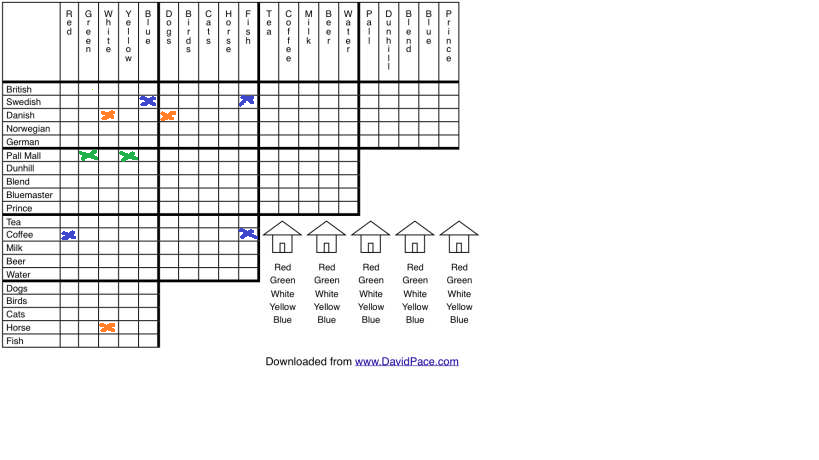John has started an Einstein's-like puzzle ("$n$ people of $n$ ages prefer $n$ foods, etc.; determine which is which from the following facts"), using a matrix for his work. He shows me his completed work, asking whether he's made any errors. There are no obvious errors (two accepted boxes in the same set, or all boxes in a set eliminated). I know of two ways to determine whether he's erred:
- Continue solving the puzzle (without error) where John has left off, and see whether I arrive at an impossible state. If so, John erred. If not, I'll complete the puzzle, and John hasn't erred.
- Start the puzzle over again and solve it (without error) until either (a) I have eliminated every square John has, and accepted every square he has, in which case he hasn't erred; or (b) I have accepted some square John has eliminated or vice versa, in which case John has erred.
Is there another way to determine whether John has erred? Specifically, is there a way that doesn't involve redoing or continuing the solution, but, rather, involves merely examining what John has done?

